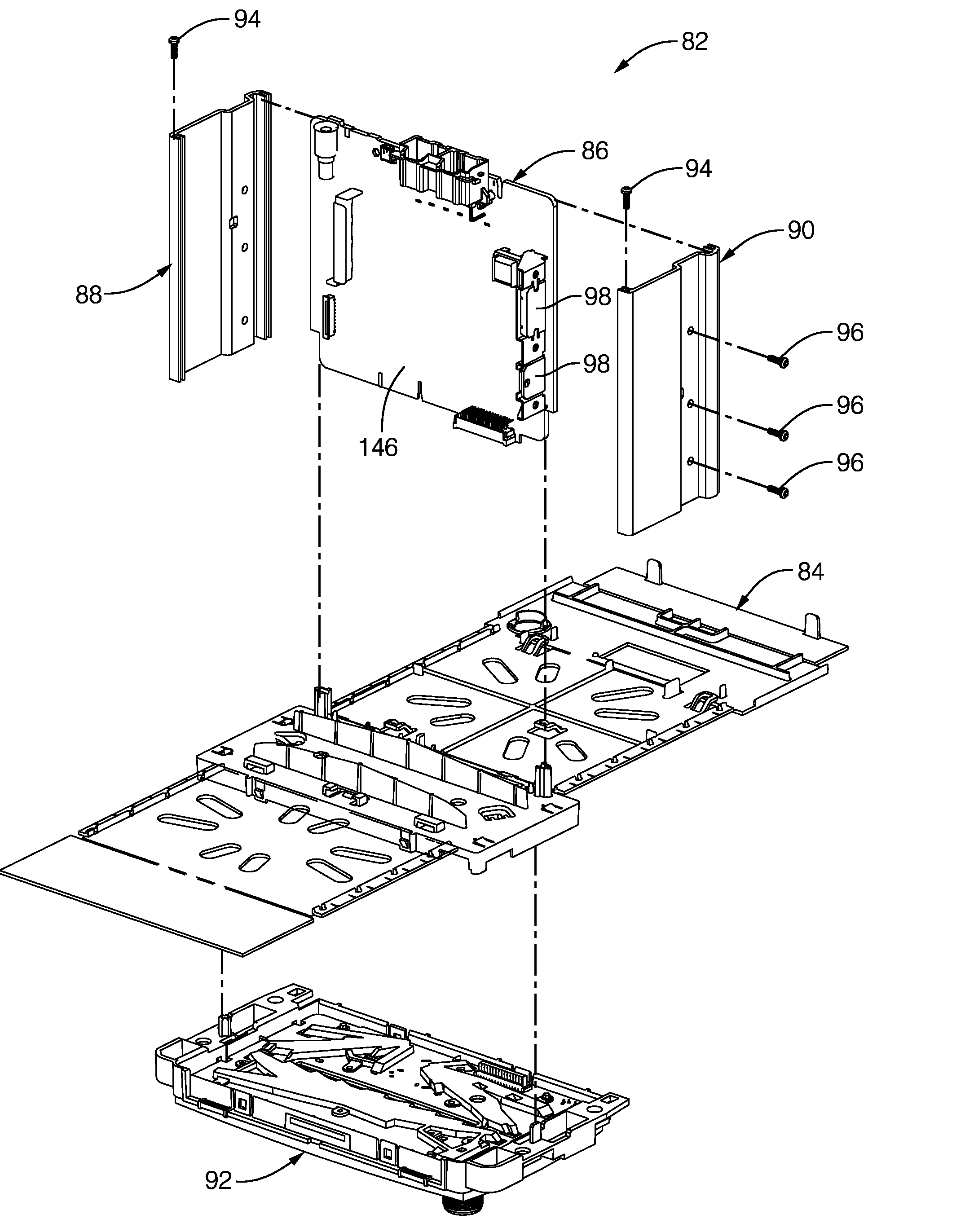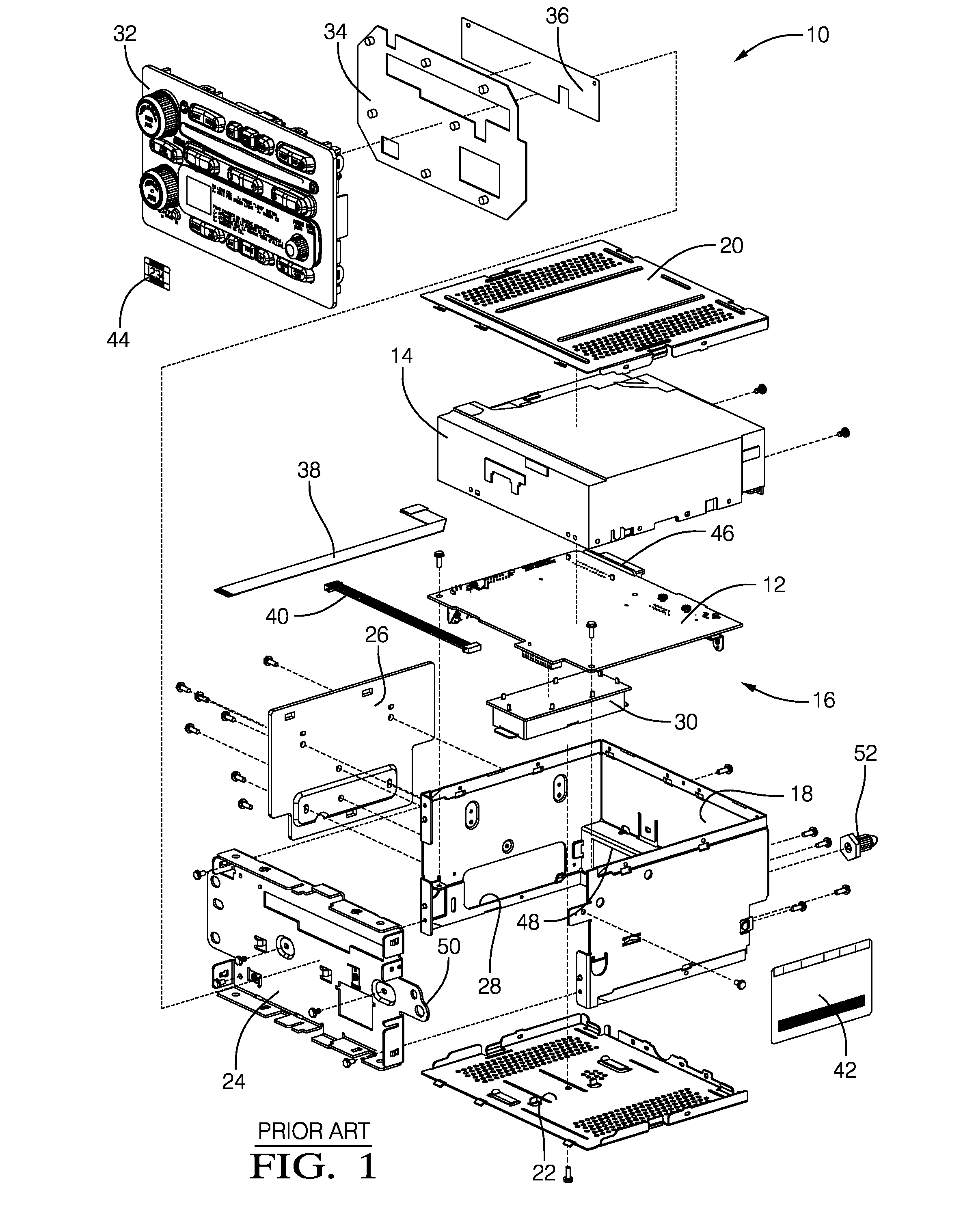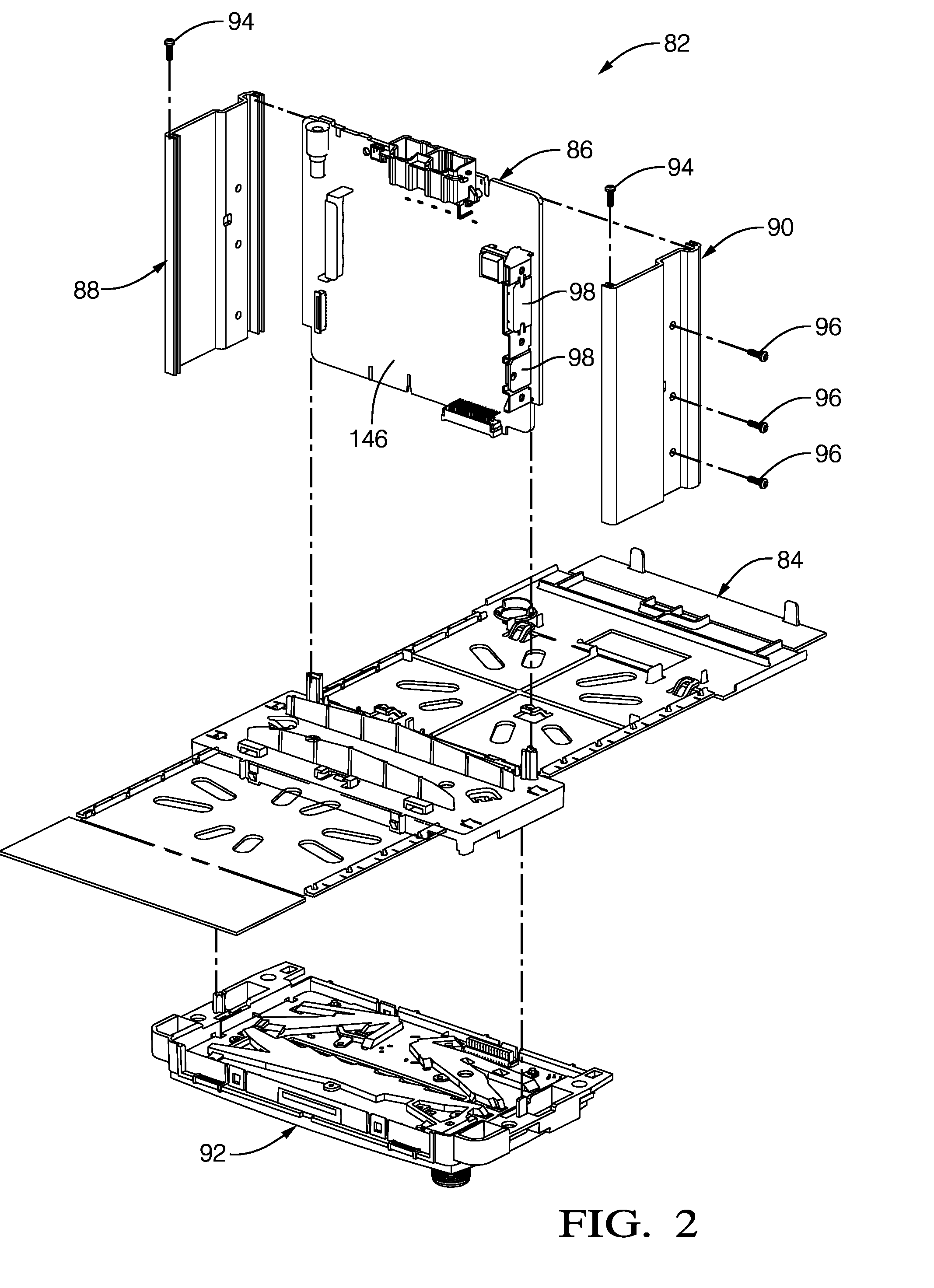Lightweight electrical assembly with enhanced electromagnetic shielding
a technology of electromagnetic shielding and electrical assemblies, which is applied in the direction of shielding materials, instruments, and rigid plastic containers, etc., can solve the problems of insufficient shielding, insufficient shielding, and insufficient shielding, so as to minimize reduce the number of work stations, and reduce the required handling
- Summary
- Abstract
- Description
- Claims
- Application Information
AI Technical Summary
Benefits of technology
Problems solved by technology
Method used
Image
Examples
Embodiment Construction
[0047]In the following Detailed Description, reference is made to the accompanying drawings, which form a part thereof, and in which is shown by way of illustration specific embodiments in which the disclosure may be practiced. In this regard, directional terminology, such as “top”, “bottom”, “front”, “back”, “leading”, “trailing”, etc. is used with reference to the orientation of the Figure(s) being described. Because components of embodiments can be positioned in a number of different orientations, the directional terminology is used for purposes of illustration and is in no way limiting. It is to be understood that other embodiments may be utilized and structural or logical changes may be made without departing from the scope of the present disclosure. Furthermore, the axes (e.g., ±X, ±Y, and ±Z axes) are referenced on the drawings to provide a relative directional sense only. The following detailed description, therefore, is not to be taken in a limiting sense, and the scope of ...
PUM
 Login to View More
Login to View More Abstract
Description
Claims
Application Information
 Login to View More
Login to View More - R&D
- Intellectual Property
- Life Sciences
- Materials
- Tech Scout
- Unparalleled Data Quality
- Higher Quality Content
- 60% Fewer Hallucinations
Browse by: Latest US Patents, China's latest patents, Technical Efficacy Thesaurus, Application Domain, Technology Topic, Popular Technical Reports.
© 2025 PatSnap. All rights reserved.Legal|Privacy policy|Modern Slavery Act Transparency Statement|Sitemap|About US| Contact US: help@patsnap.com



